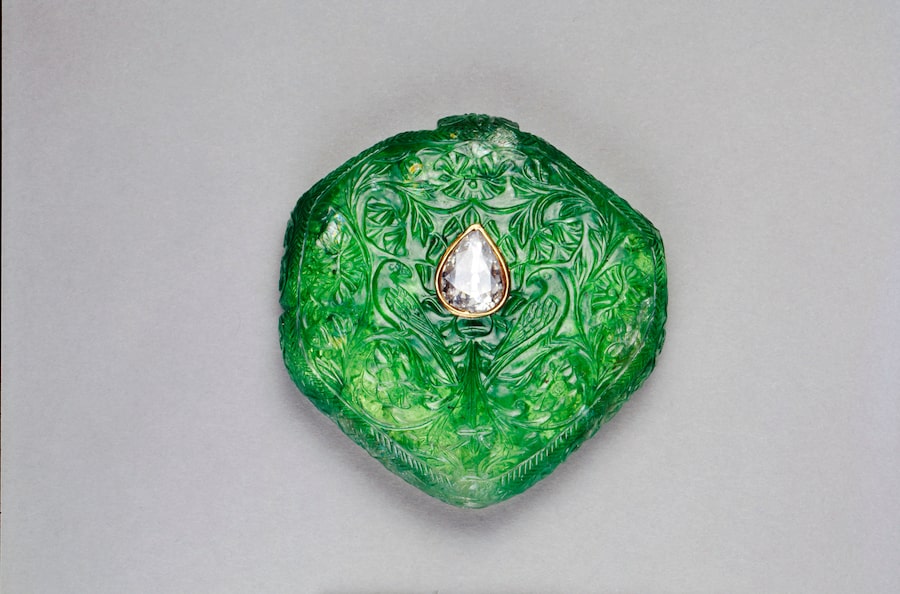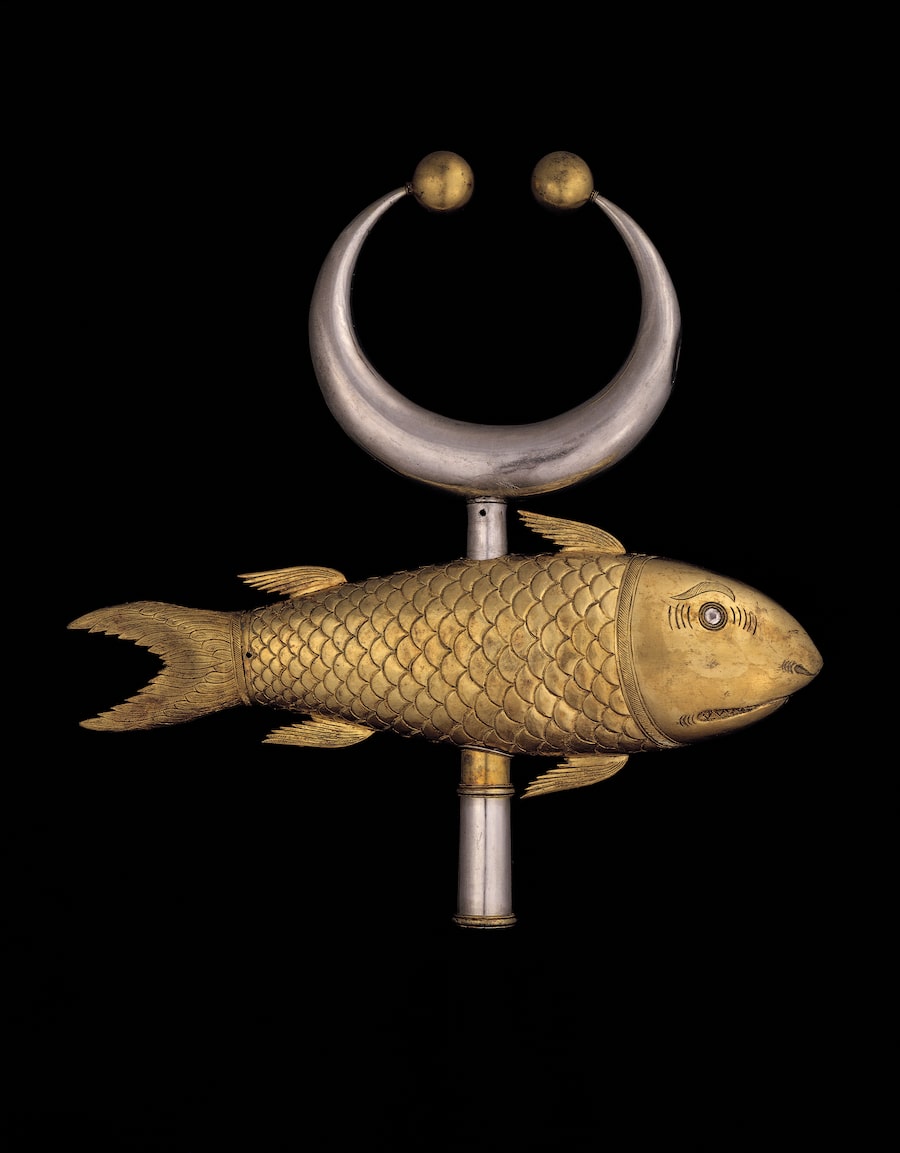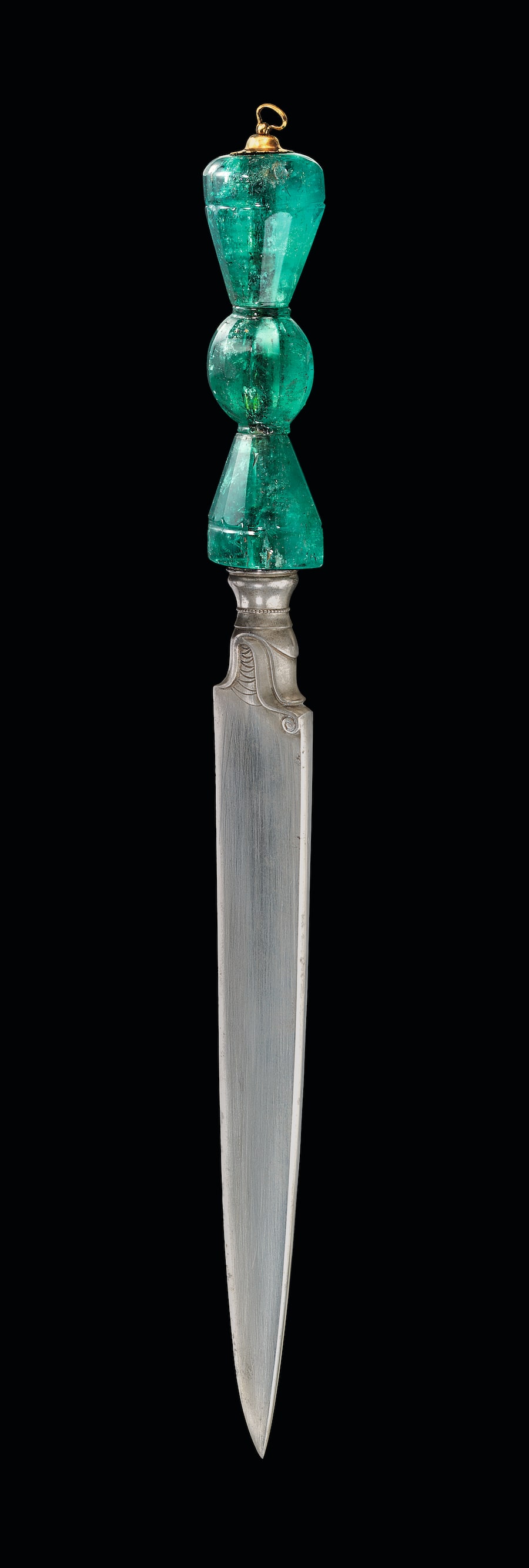Jahangir was a very fancy man, even for an emperor. In the many portraits of him commissioned during his reign, the 17th-century Mughal ruler is rarely depicted without a neck full of pearls and jewelled pendants, a turban adorned with emeralds and rubies, and a gilded sword by his side.
One such painting greets visitors to Emperors & Jewels, an exhibition at Toronto’s Aga Khan Museum that explores the Mughals’ spectacular traditions of adornment. The exhibit (which runs through Jan. 27) focuses on the Mughals, warrior-kings who ruled India from the 16th to 19th centuries, and the complex, codified ways they decorated themselves. It also offers lessons for men looking to introduce jewellery to their wardrobes in 2018.
By modern standards, Jahangir’s look would be a bit much even for a night on the town, but for a Mughal it was the bare minimum. “They were adorned from top to bottom, from Monday to Friday, from morning to night,” says Dr. Filiz Çakır Phillip, the museum’s curator, pointing to display cases glittering with rings shaped like falcons, bejewelled bracelets and daggers with ornately carved and inlaid jade handles.
The Mughals were hardly the first men to enjoy a fascination with jewellery, and certainly not the last. Prehistoric men are thought to have decorated themselves with shells and bones, while Medieval kings wore gems and precious metals as marks of status and wealth. The origins of this fascination are impossible to know with certainty, but the act of decorating our bodies with shiny objects appears to be universal.
“Wearing jewellery is a fundamental human act,” says Melanie Holcomb, a curator at the Metropolitan Museum of Art in New York, which is also hosting a major jewellery exhibit, Jewelry: The Body Transformed, this fall. “Jewellery is truly the first art form, predating cave paintings by tens of thousands of years. I think of jewellery as both an aspiration and manifestation of the self we want others to see.”
Alexander McQueen Gold & Red Logo Ring, $510. Available at ssense.com.
Styles may have changed somewhat in the intervening centuries, but much of today’s fashionable men’s jewellery retains a suggestion of Mughal influence. Alexander McQueen currently offers a gold-tone brass ring set with a large, scarlet-hued Swarovski crystal, while Versace and Gucci both have a range of heavy gold rings, bracelets and cuffs that look like something Jahangir might have worn to sit for a portrait. Unlike in Jahangir’s time, when more was clearly better, the key to wearing these things successfully in the 21st century is restraint – the larger the piece, the less accompaniment it needs.
Gold GG Running Ring, $4,505. Available at ssense.com
Versace Gold Watchlink Bracelet,$1,700. Available at ssense.com.
Not all modern men’s jewellery is designed to make such a regal statement, however. New York-based Miansai makes a line of leather and cord bracelets fastened with brass fish hooks and anchors, and cuffs inspired by sailing tackle. Worn on their own or as a complement to a vintage watch, they make an easy gateway piece for men who want to accessorize but aren’t sure where to begin. Likewise, beaded bracelets from Brazilian jeweller Luis Morais – some of them studded with rubies and 14k gold – are as subtle as they are masculine.
Today, as in centuries past, our jewellery plays a symbolic role as much as an aesthetic one, says Adrien Messié, co-founder of French jewellery brand Le Gramme. “I believe wearing jewellery is always meant to demonstrate a certain sense of belonging and membership.”

Le Gramme's bracelets are sleek and minimalist in design.
Le Gramme’s sleek, minimalist cuffs, bracelets and rings are defined by their weight in grams, which is subtly engraved on the bottom of each piece. This detail gives them an industrial appeal, but also adds an element of postmodernism. “What is a piece of jewellery, but a nicely polished bit of metal?” they seem to ask.
“One wears it more as a personal and symbolic object rather than to show off,” muses Messié of his creations, which can be worn on their own or combined with other similarly understated pieces.
“You can’t miss this,” says Aga Khan curator Phillip, excitedly indicating an apricot-sized emerald engraved with names of Mughal royalty and designed to be affixed to a turban. The Mughals’ may have valued these objects as status symbols first and foremost, but it was a far more complicated relationship than it may initially appear. “It was lifestyle, it was personality,” she says. “How they adorned themselves wasn’t just for others, it was for themselves as well.”
As in the days of the Mughals, jewellery may advertise our means, taste and status to the world, but its other purpose is far more personal. Whether it’s a massive gemstone or a simple bracelet, we wear these things both because we like how they make us look and how they make us feel. If Jahangir was alive today, he would probably agree that, then as now, it’s as much about the piece being worn as the confidence of the wearer.
Visit tgam.ca/newsletters to sign up for the weekly Style newsletter, your guide to fashion, design, entertaining, shopping and living well. And follow us on Instagram @globestyle.




